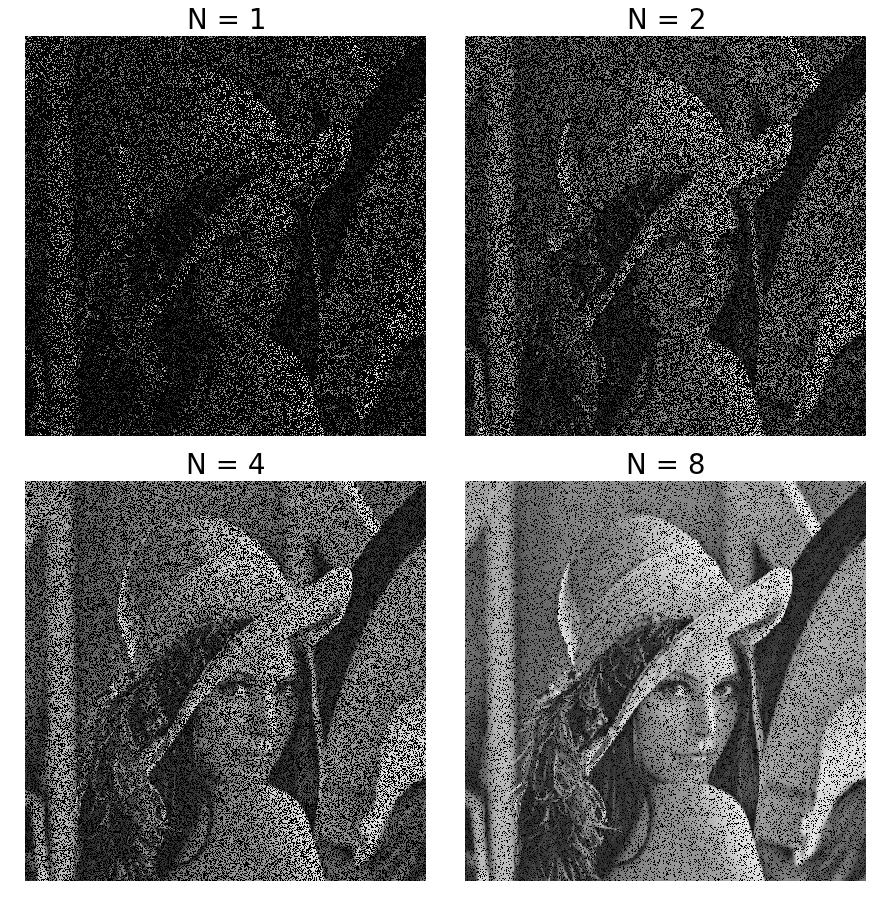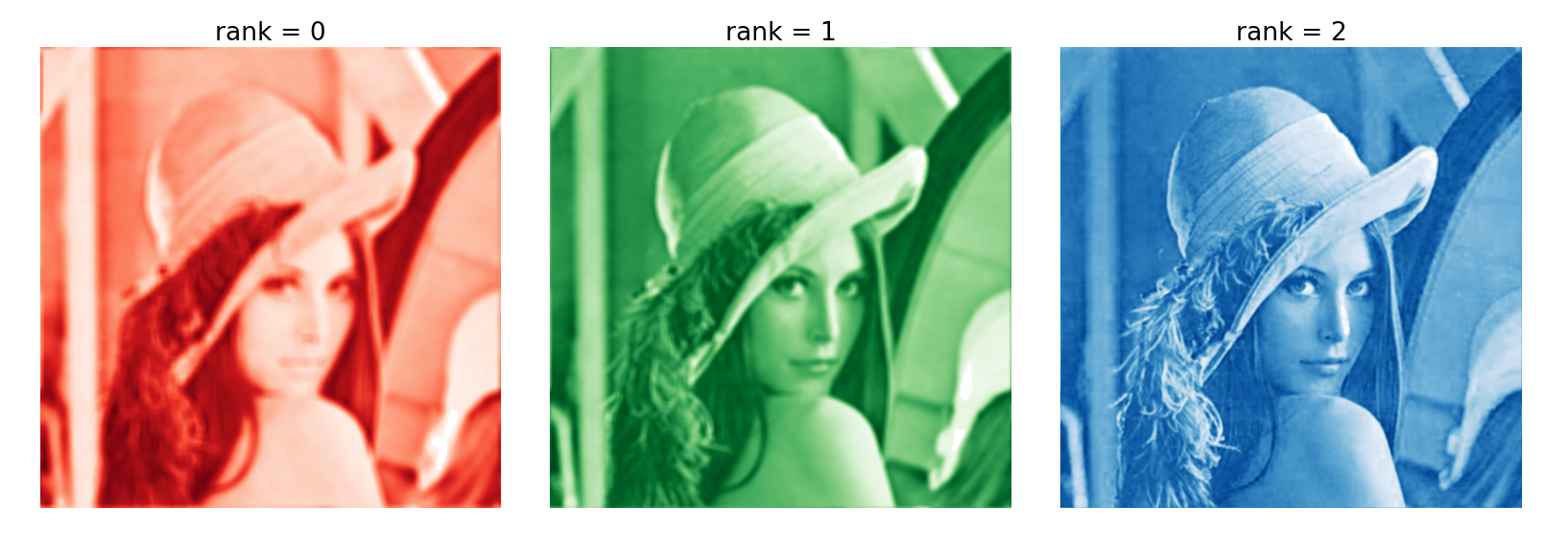6. MPI examples
6.1 Using MPIDistributionIdentityOperator
In this example, we will tell each MPI process to randomly and independly observe 20% of an input image and collect all this information to reconstruct the input image. Each observation is assumed to be affected by an independent gaussian noise.
import numpy as np
import scipy
from mpi4py import MPI
from pyoperators import MPIDistributionIdentityOperator, HomothetyOperator, MaskOperator, pcg
x0 = scipy.misc.lena().astype(float)
sigma = 2.
n = np.random.standard_normal(x0.shape) * sigma
invN = HomothetyOperator(1 / sigma**2)
H = MaskOperator(np.random.random(x0.shape) > 0.2) * \
MPIDistributionIdentityOperator()
y = H(x0) + n
A = H.T * invN * H
solution = pcg(A, H.T(invN(y)))
if MPI.COMM_WORLD.rank == 0:
np.save('mpi_n{}.npy'.format(MPI.COMM_WORLD.size), solution['x'])
The MPIDistributionIdentityOperator is a block column operator whose
blocks are the identity and for which the output of each block is
handled by an MPI process according to its rank. Hence the MPI reduction
is performed by the transpose of this operator (present in H.T): a
block row operator whose blocks are the identity.
Results for 1, 2, 4 and 8 MPI processes are shown in the following
figure.

6.2 Using MPIDistributionGlobalOperator
This operator takes a global input and scatter it as local outputs. Currently only one scattering scheme is implemented: the input is split along its first dimension by equally distributing it by increasing rank.
This operator is of limited interest for inverse problems, since the local sections are completely independent. It can still be a handy way to distribute some work. The following example takes an RGB image, split it by color and save the monochromatic image convolved by a color-dependent kernel.
# script.py
from PIL import Image
import numpy as np
import matplotlib.cbook as cbook
from mpi4py import MPI
from pyoperators import ConvolutionOperator, MPIDistributionGlobalOperator, ReshapeOperator
datafile = cbook.get_sample_data('lena.jpg')
image = Image.open(datafile)
image.load()
x = np.rollaxis(np.asarray(image, float), 2)
global_shape = x.shape # (3,512,512)
local_shape = global_shape[1:] # (512,512)
color = ('red', 'green', 'blue')[MPI.COMM_WORLD.rank]
kernel_size = {'red':11, 'green':7, 'blue':3}[color]
kernel = np.ones(2*(kernel_size,)) / kernel_size**2
H = ConvolutionOperator(kernel, local_shape) * \
ReshapeOperator((1,) + local_shape, local_shape) * \
MPIDistributionGlobalOperator(global_shape)
y = H(x)
np.save('mpi_{}.npy'.format(color), y)
This script only runs with 3 MPI processes:
$ mpirun -n 3 python script.py

